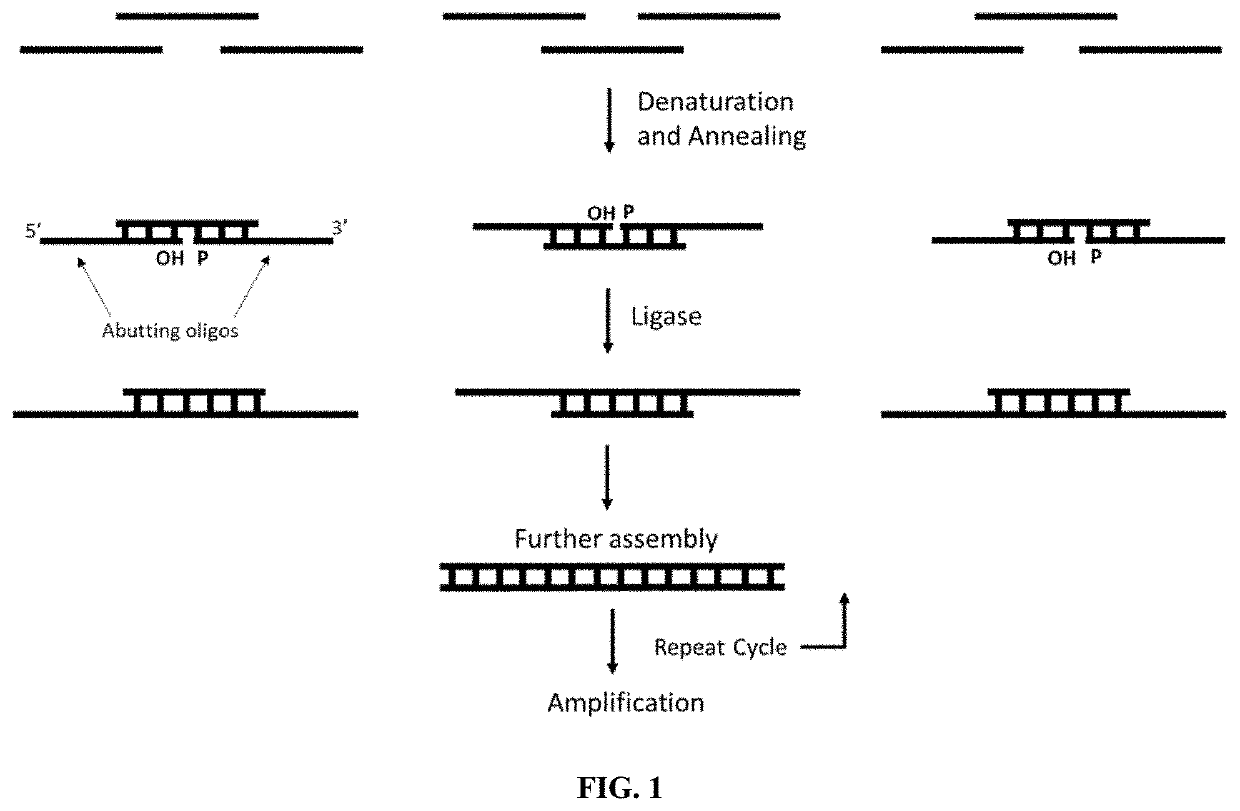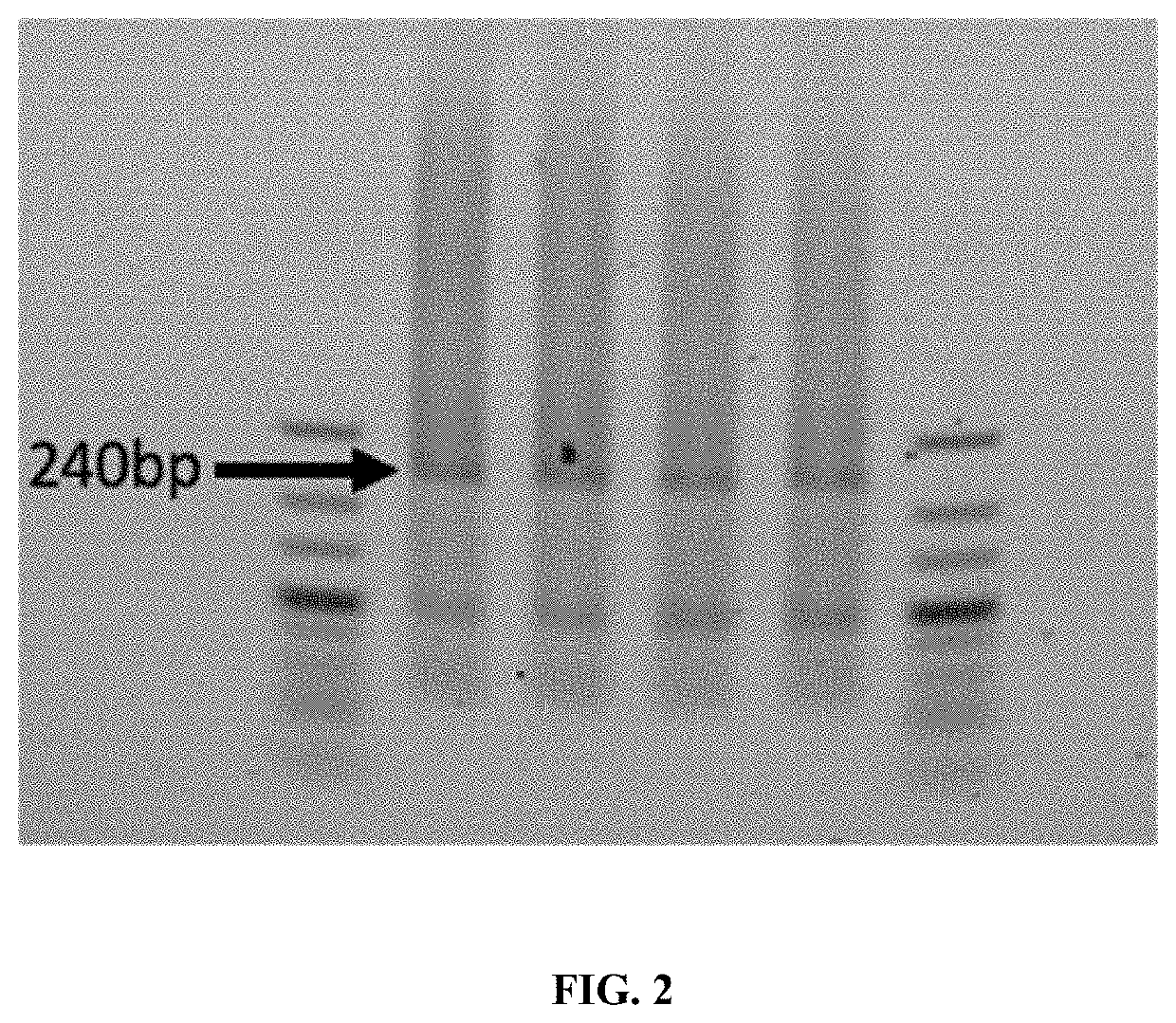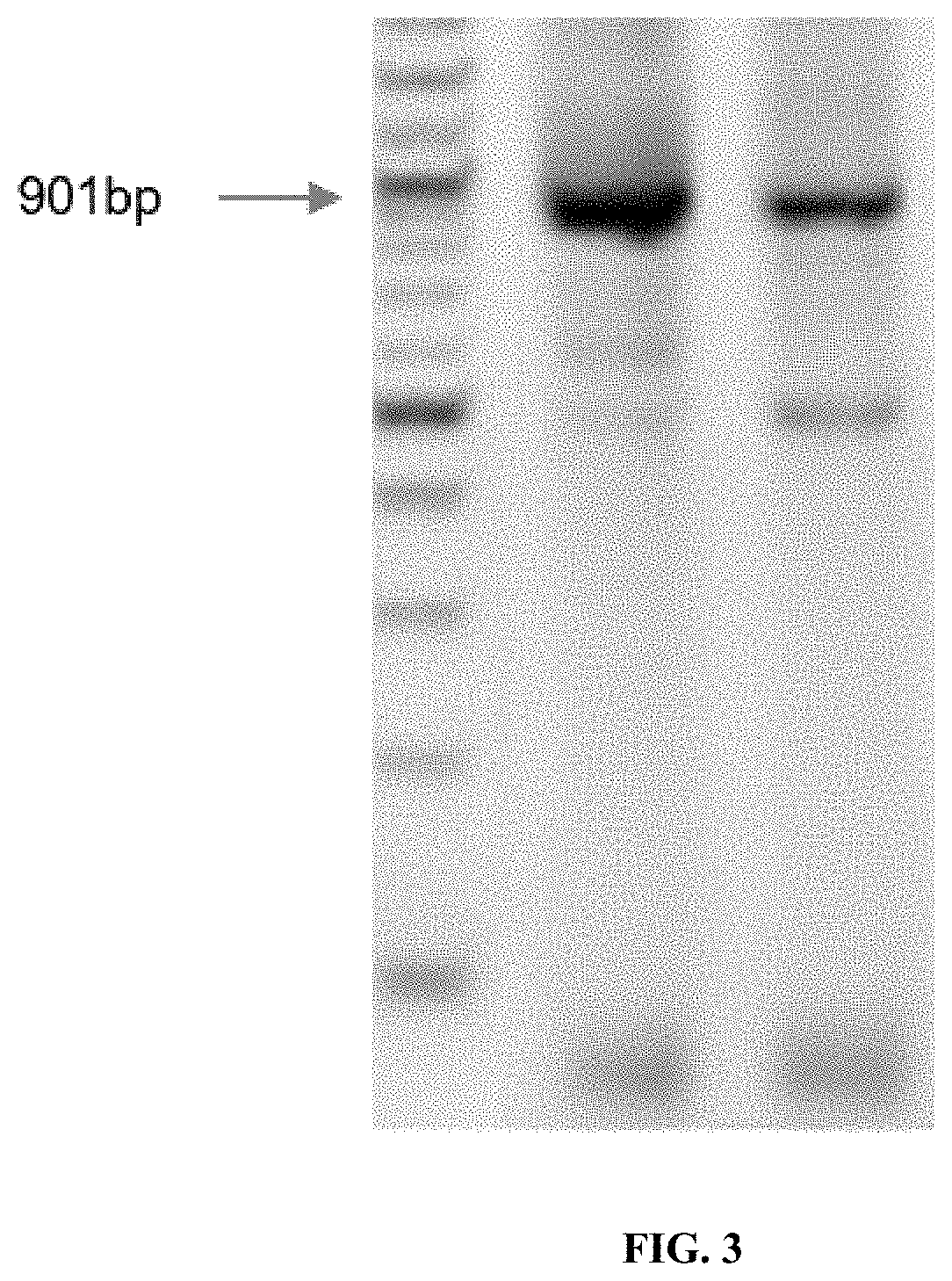Methods for assembling nucleic acids
a nucleic acid and synthesis technology, applied in the field of methods of synthesizing and constructing nucleic acids, can solve the problems of time-consuming methods, substantially less suitable automated synthesis methods, and inability to synthesize nucleic acids
- Summary
- Abstract
- Description
- Claims
- Application Information
AI Technical Summary
Benefits of technology
Problems solved by technology
Method used
Image
Examples
example 1
[0055]This example shows the synthesis of a 240 bp DNA fragment of a randomly generated synthetic sequence having about 50% GC content. Seven overlapping pools of 14 8-mers (14×8mer) containing oligos having a 4 bp overlap were ligated using T4 DNA ligase to form seven pools of 60-mers, where the pools overlap with oligos in an adjacent pool. After LCR these seven pools of 60mers were then placed into one pool and the final 240 bp product assembled by the polymerase chain assembly reaction. The 240 bp product is indicated in FIG. 2. The cloning and Sanger sequencing of 96 clones for the final 240 bp product was performed for verification (Table 1) using the Zero Blunt® PCR Cloning Kit for cloning of blunt end PCR products (ThermoFisher, Waltham, Mass.).
[0056]Two pools were formed at 25 nl volume using an acoustic liquid handling system to dispense fluids, with water added to 16 ul for a concentration of about 30 nM / oligo. To each 16 ul pool was added 10 ul of master mix containing a...
example 2
[0100]This example shows the synthesis of GFP fragments from 16-mers, 30-mers and 40-mers. Protocols used are the same as provided in Example 1. First, pools of short oligonucleotides (16-mers) were used to construct the 901 bp sequence of GFP. Varying numbers of 16mers were used in various dilutions with Taq ligase. The pool sizes were 6 pools of 32×16mers, 2 pools of 64×16mers and a single pool of 111 16mers. Oligos were 5′ phosphorylated using T4 polynucleotide kinase and assembled using the ligase chain reaction, which was followed by PCA and PCR to assemble and amplify the DNA product. Successful assemblies were achieved for all pool sizes, as shown in FIG. 3a. Gels were done and confirmation of assembly is provided in FIG. 3a.
[0101]Sequencing was performed for confirmation of the sequence of the resulting DNA molecule. An error rate of 1 error per 8500 bp was observed for a subset of the assembled DNA molecules. It was therefore demonstrated that a highly complex mixture of s...
example 3
[0102]To demonstrate that the method can assemble larger DNA molecules the influenza HA (1927 bp) and NA (1609 bp) nucleic acids having vector ends were assembled using the method. Various pooling scenarios were performed and successfully assembled the DNA molecule, including 16mers split into five sub-pools (each sub-pool containing 64 oligos overlapping (128 bp) with adjacent sub-pools), 16mers as a single pool, 30mers as single pools, and 40mers as single pools. Sequencing confirmation of the assembled nucleic acid molecules showed that 92% and 89% of the HA and NA were assembled as error free molecules. This compared to assembly of the molecules from 60mers, where 37% and 29% of the HA and NA molecules were assembled as error free molecules. Resulting gel is depicted in FIG. 4a.
PUM
| Property | Measurement | Unit |
|---|---|---|
| Fraction | aaaaa | aaaaa |
| Fraction | aaaaa | aaaaa |
| Fraction | aaaaa | aaaaa |
Abstract
Description
Claims
Application Information
 Login to View More
Login to View More - R&D
- Intellectual Property
- Life Sciences
- Materials
- Tech Scout
- Unparalleled Data Quality
- Higher Quality Content
- 60% Fewer Hallucinations
Browse by: Latest US Patents, China's latest patents, Technical Efficacy Thesaurus, Application Domain, Technology Topic, Popular Technical Reports.
© 2025 PatSnap. All rights reserved.Legal|Privacy policy|Modern Slavery Act Transparency Statement|Sitemap|About US| Contact US: help@patsnap.com



